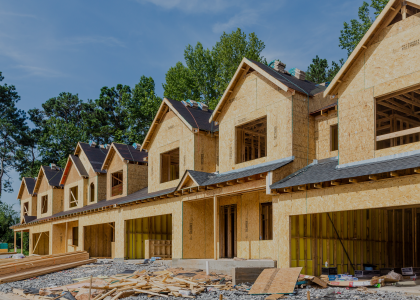WASHINGTON, D.C.—With billions of dollars in federal funding available to states to develop and expand residential energy retrofit programs, a new paper from the American Council for an Energy-Efficient Economy (ACEEE), the AnnDyl Policy Group, and the Building Performance Association (BPA) outlines how states can maximize the impact of the funds to lower utility bills and cut climate pollution.
“Federal funding for residential energy retrofits will make a huge difference, but what’s most important now is that states put it to use effectively,” said Jennifer Amann, co-author of the report and a senior fellow in ACEEE’s buildings program. “Existing programs lay the groundwork for improved retrofit efforts and market approaches that will make it easier and more affordable to retrofit housing to enhance comfort, improve health, and cut energy costs and climate-warming emissions. With the new funding now available, states can improve on these programs and continue to innovate.”
The report offers insights for how states can integrate funding from the Inflation Reduction Act of 2022 and the 2021 bipartisan infrastructure law with existing state, local, utility, and other resources available for residential retrofits. Combining complementary funding sources—known as “braiding and stacking”—can Read the Paper help maximize impact while reducing the cost of home energy retrofits. The report identifies $53 billion in federal rebates, grants, and other incentives, in addition to potentially unlimited funding from tax credits and deductions for residential energy retrofits. It found another $30 billion in non-federal resources from housing funds, state and local programs, utility programs, and financial institutions, with recommendations for how to integrate the funding sources.
“It is critical that the complicated process associated with braiding different funding mechanisms is worked out by policymakers and program implementers. At the kitchen table, decisions about an energy efficiency upgrade need to be a simple conversation between the homeowner and the contractors,” said Kara Saul-Rinaldi, co-author of the report, chief policy officer at BPA, and president and CEO of the AnnDyl Policy Group.
The authors evaluated decades of work by residential retrofit programs and recent technical developments and interviewed policymakers and program stakeholders to inform their recommendations for design elements that best support property owners, contractors, and policymakers to achieve their objectives.
Robust training and workforce development initiatives are essential to ensuring an adequate workforce that can deliver quality retrofits, and the report recommends that states start by engaging stakeholders to deepen their understanding of the local market. Contractor and technician training on high-efficiency technologies and installation practices can be complemented with training for business owners and managers, who will benefit from learning how to adapt their business models to maximize the financial opportunities available from energy efficiency projects.
The report found that retrofit programs can boost energy savings and reduce household energy burdens by prioritizing equitable access to historically underserved communities. Renters and rental properties have long been underserved by efficiency programs, so the report recommends creating options to bring energy retrofits to multifamily and single-family rental buildings while protecting renters from potential displacement. The paper also calls for providing capacity-building resources and technical assistance to community-based organizations, contractors, and retailers to help eliminate barriers to participation.
The paper identifies eight program elements essential for successful retrofit programs. They are:
- Providing training and workforce development opportunities,
- Delivering affordable financing,
- Offering rebates and incentives,
- Prioritizing energy equity and environmental justice,
- Addressing health and safety prior to home efficiency upgrades,
- Incorporating grid flexibility in building efficiency,
- Ensuring secure access to data, and
- Planning for long-term market transformation and oversight.
The new federal resources are an important opportunity for states not only to upgrade a significant portion of U.S. homes but also to educate Americans about energy efficiency and help spur wider retrofits.
“Every heating and cooling season that passes without clarity for contractors and homeowners about funding available for residential energy upgrades is a missed opportunity,” Saul-Rinaldi said. “We need to change how people think about the homes they live in and their energy consumption. Policies that spur market transformation by increasing data flows to assist in measuring energy savings, direct attention to overlooked energy-hungry appliances, and offer certifications to value homes and training will advance a clean energy future for American homeowners.”
###
The American Council for an Energy-Efficient Economy (ACEEE), a nonprofit research organization, develops policies to reduce energy waste and combat climate change. Its independent analysis advances investments, programs, and behaviors that use energy more effectively and help build an equitable clean energy future. aceee.org
The Building Performance Association (BPA) is a 501(c) 6 nonprofit industry association that serves as the hub for businesses, nonprofits, and government agencies working to make America’s homes more comfortable, healthy, and energy efficient. Our mission is to transform the market for the home performance industry through advocacy, education, professional development, and networking. building-performance.org
The AnnDyl Policy Group is a Washington, DC-based policy strategy firm that brings together extensive knowledge, experience, and expertise to take a substantive approach on policy and advocacy. We specialize in advanced grid infrastructure, energy efficiency, smart technology, demand response, clean energy financing, renewable energy, and carbon and climate policy. anndyl.com



